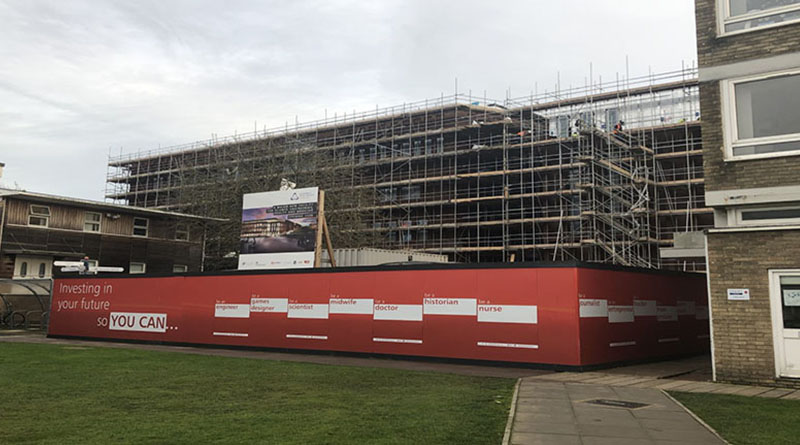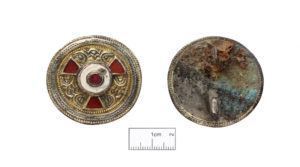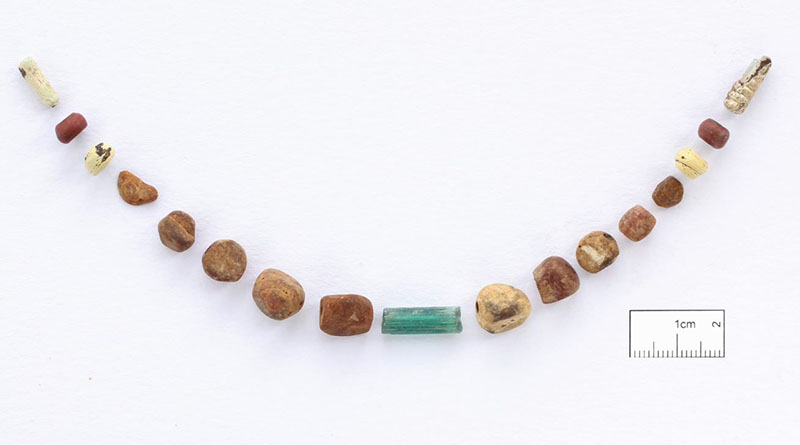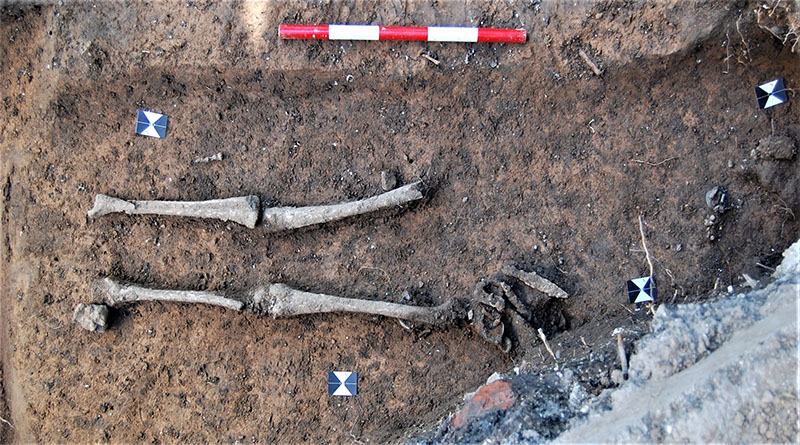Remains of Anglo Saxon body discovered below university building
The burial site was found next to St Augustines Abbey and could be vital to the insight of the history of Canterbury.
The remains of what is believed to be a woman in her twenties was discovered buried along with many luxurious pieces of jewellery. The body was found with a necklace made of amber and glass beads, a copper alloy bracelet and an iron knife.

But the most notable of the findings was a silver garnet inlaid Kentish disc brooch. After scientific testing, it is believed that the garnets are likely to have come from Sri Lanka rather than the local Kent area.

But what does this mean?
It isn’t usual for a farmers wife to be found with these kinds of jewels, it’s likely that this woman was a friend of the royal family. In an interview with Archaeologist Andrew Richards, he predicts that the brooch was most likely distributed as a gift by the Kentish Kings:
“It demonstrates the richness of the archaeology that surrounds us, and contributes important new evidence to our understanding of life and death in Canterbury around 1400 years ago,” he said.
“She’s probably someone who did rub shoulders with the Kentish royal dynasty, so I’d expect she’s personally equated with them.
“The Place her body was buried is known to be a royal estate before the foundation of the Abbey.
“She’s probably someone who did rub shoulders with the Kentish Royal dynasty so I’d expect she’s personally equated with them.
“The most important thing about this grave is that they hadn’t found one at the Augustine site or on the uni campus before, so we know that the abbey was founded in the early 7th century and this body almost certainly predates the Abbey. However, she might have just been around to see St Augustine arrive in the year 597.
“It suggests there is a burial ground that predates the abbey which is new information that it’s a world heritage site, making it very significant.”

The bones were studied by Dr Ellie Williams, lecturer in Archaeology at Canterbury Christ Church University.
“The discovery of another ancient burial on our campus is extremely exciting,” she said.
“It demonstrates the richness of the archaeology that surrounds us, and contributes important new evidence to our understanding of life and death in Canterbury around 1400 years ago.
“It is possible that the woman lived long enough to be an eyewitness to the arrival of St Augustine and his monks, who came to Canterbury in AD 597 on their mission to convert the English to Christianity. But her burial, found beside Old Sessions House, close to the present boundary with St Augustine’s Abbey, almost certainly took place before the construction of the first church at St Augustine’s in the early seventh century.”
